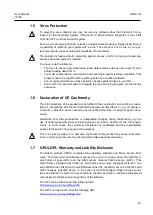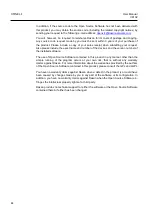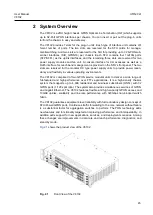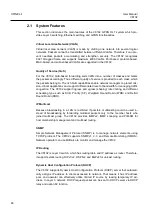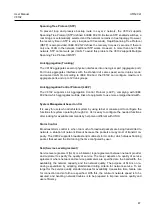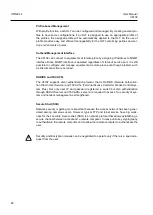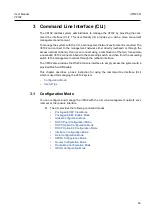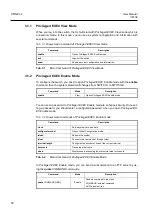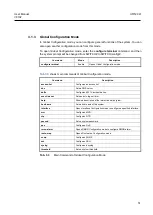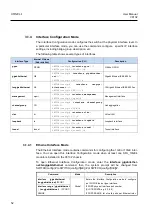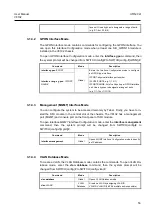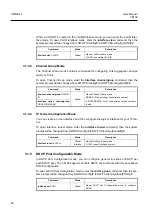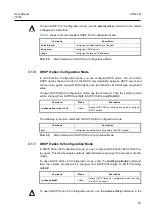
User Manual
UMN:CLI
V8102
47
Spanning Tree Protocol (STP)
To prevent loop and preserve backup route in Layer 2 network, the V8102 supports
Spanning Tree Protocol (STP) defined in IEEE 802.1D. Between STP enabled switches, a
root bridge is automatically selected and the network remains in tree topology. However,
the recovery time in STP is very slow (about 30 seconds), Rapid Spanning Tree Protocol
(RSTP) is also provided. IEEE 802.1W defines the recovery time as 2 seconds. If there is
only one VLAN in the network, traditional STP works. However, in more than one VLAN
network, STP cannot work per VLAN. To avoid this problem, the V8102 supports Multiple
Spanning Tree Protocol (MSTP).
Link Aggregation (Trunking)
The V8102 aggregates several physical interfaces into one logical port (aggregate port).
Port trunk aggregates interfaces with the standard of same speed, same duplex mode,
and same VLAN ID. According to IEEE 802.3ad, the V8102 can configure maximum 8
aggregate ports and up to 12 trunk groups.
Link Aggregation Control Protocol (LACP)
The V8102 supports Link Aggregation Control Protocol (LACP), complying with IEEE
802.3ad, which aggregates multiple links of equipments to use more enlarged bandwidth.
System Management based on CLI
It is easy for users who administer system by using telnet or console port to configure the
functions for system operating through CLI. CLI is easy to configure the needed functions
after looking for available commands by help menu different with UNIX.
Storm Control
Broadcast storm control is, when too much of broadcast packets are being transmitted to
network, a situation of network timeout because the packets occupy most of transmit ca-
pacity. The V8102 supports broadcast and multicast storm control, which disuses flooding
packet, that exceed the limit during the time configured by user.
SLA (Service Level Agreement)
Service level agreement (SLA) is a bilateral, legal agreement between network provider
and customer to specify the quality of service. The major aspects of a quality of service
agreement where network and service parameters are specified are the bandwidth, the
availability, the network capacity, and the network quality. The purpose of SLA is on re-
ducing expenditure by adapting standardized rating criteria for network service. To set
target for the service quality, standard values for availability, transaction time, failure rate
for connection and so forth are specified. With this, the minimum network speed is to be
assured, and handling network troubles is to be prepared to improve service quality and
user efficiency.
Содержание V8102
Страница 1: ...1 V8102 GPON OLT system User Manual...
Страница 158: ...UMN CLI User Manual V8102 158 When you use the no snmp command all configurations of SNMP will be lost...
Страница 427: ...User Manual UMN CLI V8102 427 show debugging dhcp Enable Global Shows the debugging information of DHCP...
Страница 797: ...User Manual UMN CLI V8102 797 show onu gsp status config ONU_ID tag list number TAG_NAME tag name...











